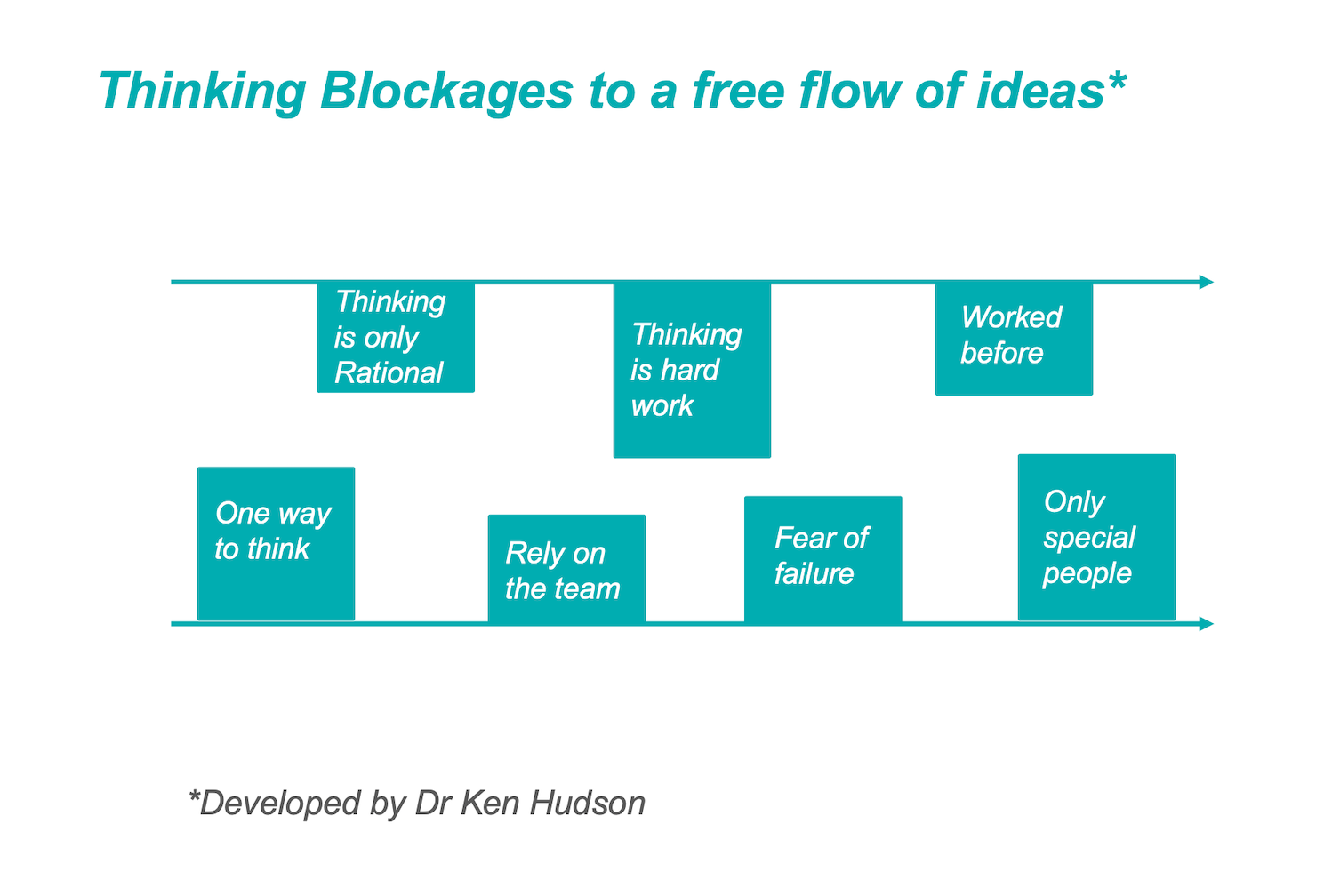Some 10 years ago I felt slightly nauseous after a game of soccer. Not suspecting anything I went off to my local GP and he put it down to a bug that i may have picked up on a recent overseas trip.
On further examination he suggested due to my family history of heart disease that I go and see a cardiologist. Fortunately for me, a stress test suggested there was a problem and a few days later i found myself in hospital and the lucky recipient of a stent (i.e. a balloon in an artery) as one of my arteries was 90% blocked.
This blockage impedes the free flow of blood around the body and can lead to a stroke or heart attack.
10 years later I am still here!
Now what if we use the idea of a blocked artery as a metaphor for describing in a similar way some common blockages in your thinking?
If you have a blockage in your thinking it means that you are reducing the free flow of insights, ideas and solutions and greatly limiting your potential.
Based on my 20 years of working with managers and leaders across Australia and around Asia here are some of the most common thinking blockages.
- There is only one way to think (i.e. critical).
This is clearly not rue as there are many different ways to think. Some of which include Imagination, Intuition, Systems Thinking, Creative Thinking and Lateral Thinking just to name a few. Why limit yourself to one way of thinking when there are some many others to choose from. Think of a Swiss Army Knife approach to thinking.
2. Thinking is rational, linear and logical
Again this point follows from the first. Critical Thinking is rational, linear and logical. Imagine a well constructed bridge – it is wonderful for walking across but is not very flexible when times change. Thinking can also be imaginative, non-linear, visual and emotive.
3. Thinking is a special gift of High Intelligence people
There are few of these. And sure they often a very good thinkers. But another way to thinking about thinking is that it is a skill which can be practiced and developed.
4. Thinking is hard work and time consuming
It can be. But new ways of thinking such as my Switch Thinking I have proven that this breakthrough approach can be fun, easy, quick and energising.
5. Relying on the group or team
Nearly all work today is done in groups and teams. Yet sometimes what happens is that everyone relies on the team to do the thinking and in reality no-one is thinking. Imagine being in a boat and everyone stops rowing and waits for everyone else. Not much progress would be made.
Groups and teams can also fall victim of ‘group think’ where the desire for group harmony overrules any disagreement or divergent views.
6. It has worked in the past.
This is a paradox in thinking. We use thinking patterns that have proved successful in the past.Why because it has worked, it’s efficient, safe and comfortable. And this approach can work in the future if the environment does not change. But as we know this is not the case. We all live in an uncertain fast moving market-place and hence your thinking has to be flexible not rigid. Just like you cannot allow the build up of blockages in your arteries you cannot allow the buildup og blockages in your thinking.
7. Fear of failure
This point is related to the the previous one. Your safe option is nearly always to go with what has worked in the past. Yet sometimes if the situation has changed this cautious approach will not work. Hence you need to sometimes make a leap in the dark and take a risk and adopt a new approach.
In Switch Thinking I call this moving from Option A (i.e. your first, initial approach) to Option D (i.e. a different one).
8. Fixed Thinking
One of the biggest mistakes or blockages i come across when working with leaders and managers is they cling to fixed ideas, assumptions and beliefs about their customers, market and competitors. This is a dilemma because sometimes the more expert you are about a situation the harder it is to accept something new. Again this can cause a blockage in your thinking.
9. Too busy
This is a problem that most time-poor leaders complain about. Yes they are extremely busy. They have high performance expectations to deliver on so (in their view) do not have as much time as they would like to think. Yet thinking is what they are supposed to be doing. And if they are not thinking then who is?
It’s why with Switch Thinking I have developed a number of time efficient Switches to help leaders to think quickly, creatively and more effectively.
10. An over-reliance on AI
This may increasingly become a problem in the future. There may come a time when leaders out-source their thinking to not only to consultants but to AI. In which case who is doing the thinking?
As you can see there are many blockages in your thinking. The good news is that there are remedies just like in my case there was a medical procedure to keep my heart pumping.
I call this unblocking approach Switch Thinking.

